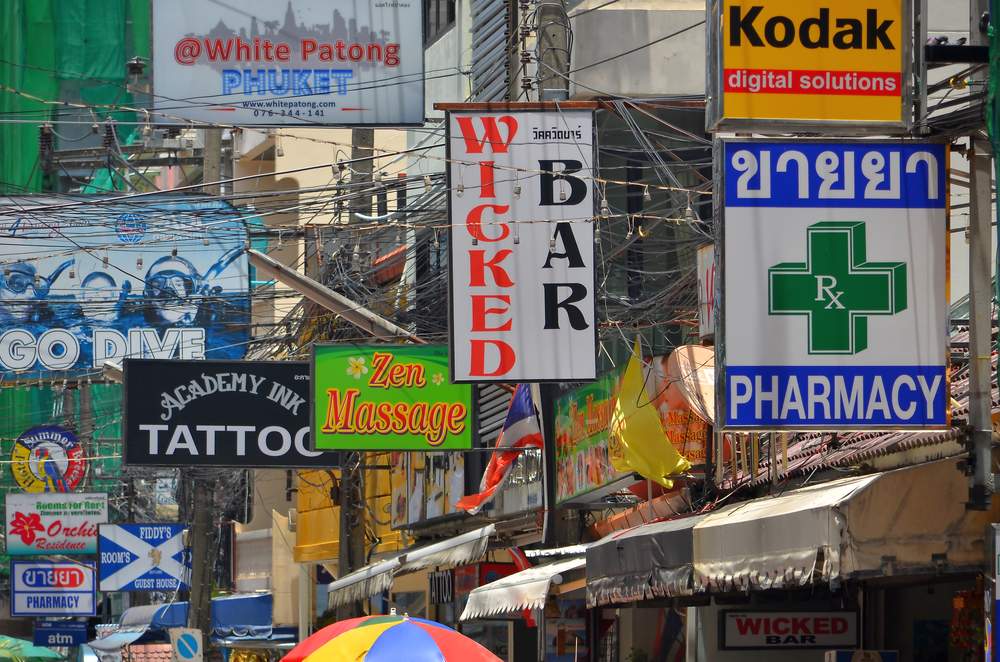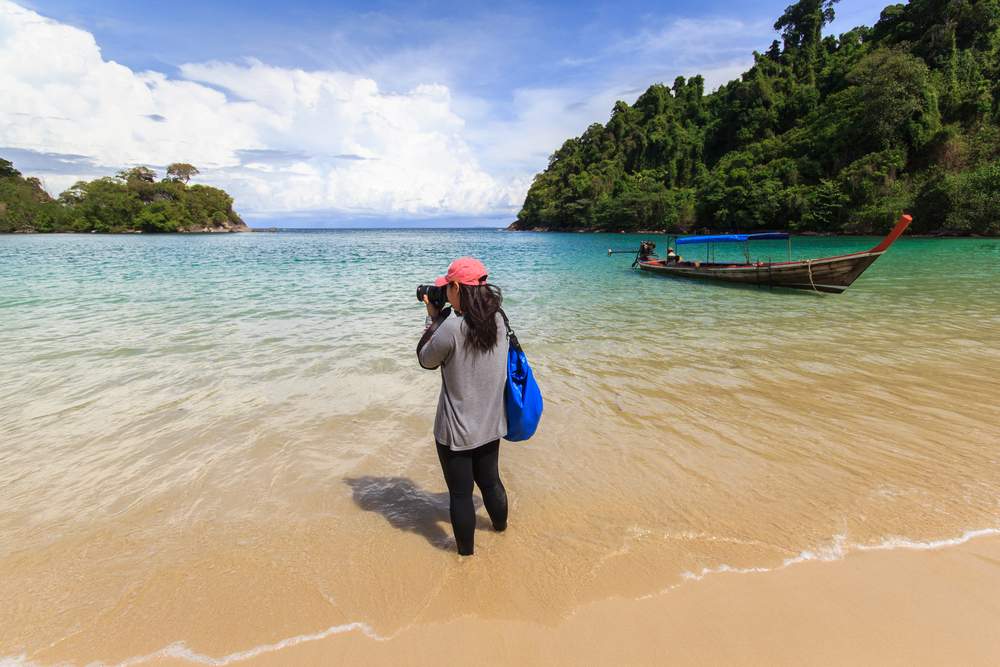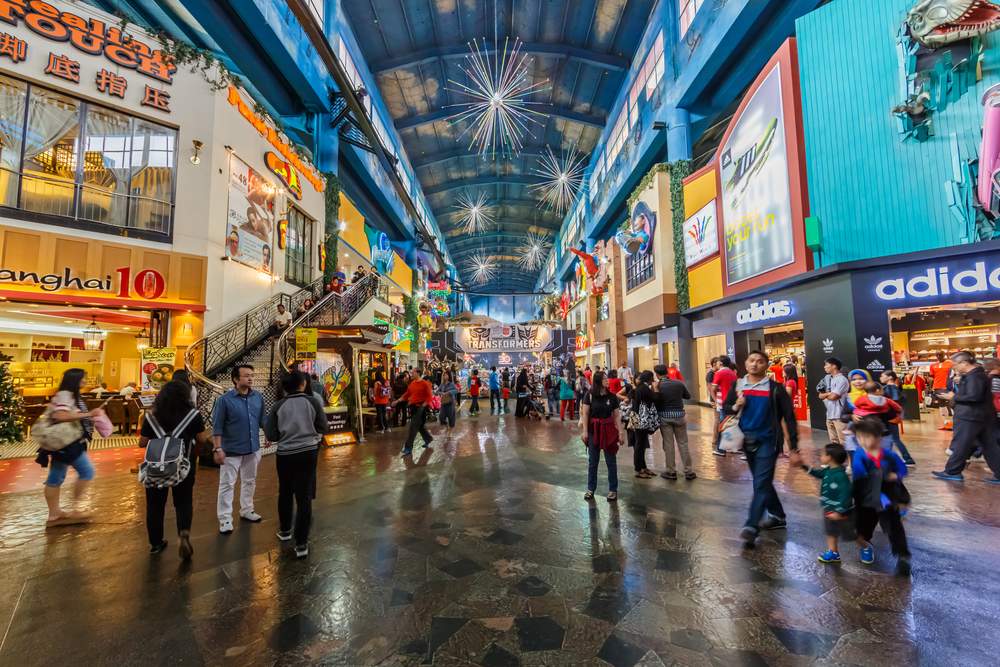Southeast Asia is a tricky region in terms of packing. The weather is generally hot, and your first instinct may be to pack a bunch of cargo shorts, short shorts, tanks, and bikinis, but before you do that, there are other factors to consider.
The majority of Southeast Asian countries are conservative, and dressing like you would for the beach in California is not always a good choice – unless of course you’re sticking to the beaches.
Your travel wardrobe should be as diverse as the countries you’ll be visiting, and it’s a good idea to think about the type of activities you’ll be doing as you travel.
Clothing

Shirts
A light weight, long sleeved shirt will provide a layer of protection from mosquitos when you’re in outlying areas. Remember that dengue mosquitos bite during the day, and malaria mosquitos at night. There’s no pill for dengue, like there is for malaria, so avoiding bites is imperative. A long sleeved shirt helps.
Pants, Shorts & Skirts
A pair of yoga pants is always a good idea, as there are days when you’ll want to feel comfortable. They are also good for trekking or hanging in the jungle. You’ll be glad of the comfort if you opt for one of the all night bus rides. And, if you can trick your brain into thinking they’re not too hot, wearing a pair of your favourite jeans are a great way to combat mosquitos.
Underwear
Southeast Asia is one destination where investing in the pricey “quick dry” variety might be worth it, especially if you’re traveling during monsoon when the air feels wet even when it’s not raining and getting things dry is a perennial problem.
Jacket or Sweater
Ladies, an alternative to wearing a sweater is to pack a sarong or wrap. Sarongs are very versatile, you can use them as a dress, to cover-up at a beach or temple, use as a towel, or to help keep yourself warm when the air conditioning is too cold.
A lightweight, packable rain jacket is a good idea if you’re traveling during monsoon. It will also act as a wind breaker if you plan to travel by boat and need to protect yourself from cool night sea breezes.
Shoes
It’s also a good idea to also pack a pair of closed-toe shoes for when you want to go out at night. If you’re hoping to go trekking, then bring a pair of trainers with good support. That being said, there are plenty of Nike shops in Southeast Asia and you can always buy a pair once you’ve arrived.
Accessories
For a day bag, think about what you’ll be carrying, and what you’ll be doing. If you’re a digital nomad you’ll want something that will hold your camera, as well as your laptop and notebook. Many go for backpack style bags, but there are also some good cross-body bags that will do the trick. Extra points if you can find one that folds up into nothing and doesn’t add another bag to your pile when you’re taking a flight or a bus!
Read How to Choose Clothes for your RTW Trip and check out the How to Have Custom Clothes Made in Hoi An, Vietnam
First-Aid Kit & Toiletries

Always have some Imodium incase you get struck with a sudden case of traveler’s diarrhea. It’s also a good idea to have a small container of vaseline – great for your lips, but also good for clotting blood should you fall and cut yourself. Tiger balm is another smart choice.
If you’re on medication, make sure your doctor writes down your prescriptions in case you need a refill while travelling. It’s also a good idea to write down your allergies in local languages in case of an emergency.
Some travelers take advantage of the wide availability of over the counter meds, available without prescription, in most of the countries in Southeast Asia and build up their traveling health kit while they are there. It’s also worth noting that travel health clinics at the private hospitals in the bigger cities are excellent places to get your travel vaccinations at a fraction of the price you’ll find them in North America. In some cases, you can get things once you’re there that are very difficult, if not impossible, to acquire at home (such as the Japanese encephalitis vaccination).
Read FAQ About Malaria
Tech

A camera is mandatory for most travelers, but don’t forget to bring an extra battery, as well as extra SD cards. There is nothing more frustrating than being in a remote location and discovering that your camera battery has died, or your SD card is full and you have no way to transfer the photos.
Consider what you need to charge all of these devices and what sort of converter you will need. Sometimes packing a small power strip is a great solution to the problem of power. One plug in a hostel common room, or beneath your cafe table will get the job done for every piece of chargeable tech that you’ve got with you.
Read 5 Tips for Finding the Balance Between Travel and Technology and check out the Is Constant Connection Ruining Travel?
What Not To Bring

- Extras of just about anything: Trust me, you can get it there.
- Medications: Bring your prescriptions. The pharmacies sell everything but controlled substances over the counter
- Valuables: You’ll just worry about them, and in remote places they can be a target.
- Books: Book swap shelves are in every hostel & foreign language book shops are common, especially in bigger towns
When travelling for six months, or more, it can be tempting to bring all your things, but resist. Always look at your pile of clothing and gear, then cut it in half. Bring clothing that can serve multiple purposes. Fun t-shirts are great, but it can be hard to dress those up, so bring one or two nice ones as well.
Remember to think about the cultures you’re visiting, and showing them respect – something that goes beyond good manners.
As a safety net, for those things you are really sure you must have, you can always stuff a couple pieces of clothing, or those size 13 shoes in a bubble pack and instruct a friend or family member to Fed-Ex it to you, should you message them and ask for it.
The reality is, with very few exceptions, that you’ll be able to find every thing you need just about anywhere you travel, it’s just a matter of adjusting your expectations and going with the flow, which is why we travel, right?
Read more about packing and planning:
- Ultra Lightweight Travel and No Baggage Fees
- How to Plan an Extended Trip in Southeast Asia
- How to Pack for Two Different Trips in One bag
- 12 Reasons Why Southeast Asia is the Best Place in the World
- Cheap Southeast Asia: How to Pretend You’re Rich in Bangkok
Photo credit: De Visu , I Love Travel , Tonktiti , Tooykrub , De Visu